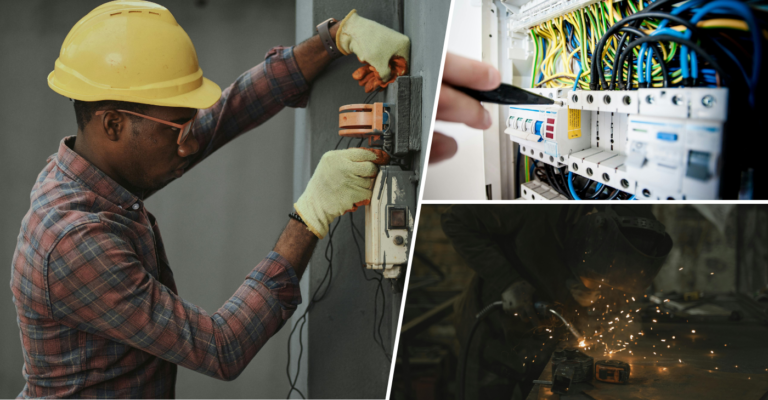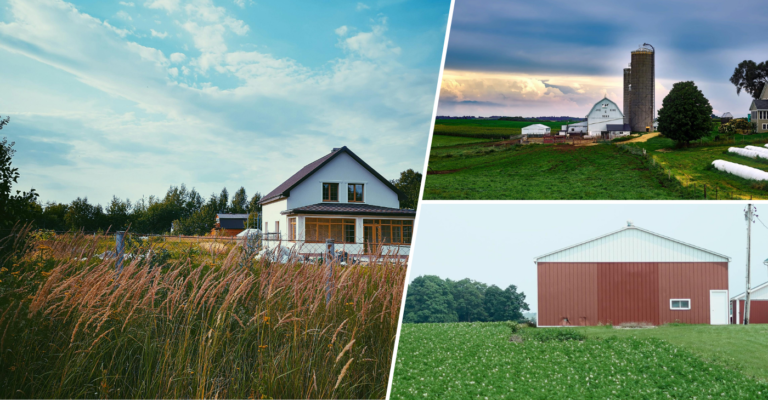VAT in construction – Residential vs. commercial construction
In the construction industry, one of the most significant factors influencing project budgets is VAT (Value Added Tax). Whether you’re developing a residential building or embarking on a commercial construction project, understanding the nuances of VAT is crucial for compliance and cost optimization. Contractors need to be aware of the specific VAT regulations in construction to avoid penalties. VAT plays a pivotal role in construction projects, affecting everything from materials procurement to billing clients. Mismanaging VAT can not only inflate costs but also expose you to legal risks.
The type of construction you’re working on determines the VAT rate and the opportunity for VAT recovery. For construction professionals, understanding these differences isn’t just about saving money; it’s about maintaining a competitive edge. In this guide, we’ll break down the differences between VAT on residential and commercial construction and provide practical tips for navigating the tax landscape like a pro.
What is VAT in construction?
VAT is a tax charged on most goods and services. VAT in construction can significantly impact project budgets and timelines. The government often imposes VAT on construction materials to generate revenue. For construction, it applies to everything from raw materials to professional services, impacting project costs and cash flow.
- Standard VAT rate (20%): Applies to most commercial projects and services.
- Reduced VAT rate (5%): Eligible for specific renovation and conversion projects.
- Zero VAT rate (0%): Applies to new residential developments and qualifying charitable buildings.
VAT on residential vs. commercial construction
VAT rules for residential and commercial construction differ significantly, affecting both project costs and tax recovery options.
Residential construction
New residential buildings, such as houses and flats, are typically zero-rated for VAT, meaning no VAT is charged on the sale. This zero-rating allows developers to reclaim VAT incurred on construction costs, such as materials and subcontractor services. However, standard-rated VAT (20%) often applies to renovations and repair work for existing residential properties, unless specific exemptions are met, like work on long-term vacant properties or qualifying conversions.
Commercial construction
For commercial projects, the standard VAT rate of 20% usually applies across the board, covering construction services, materials, and professional fees. The sale or lease of new commercial properties is often VAT-exempt, but developers may choose to “opt to tax” the property. This decision allows for VAT recovery on associated expenses but requires careful consideration as it impacts the VAT treatment of future transactions involving the property.
Key differences between residential and commercial VAT
Understanding the core differences between residential and commercial construction VAT can help contractors structure projects strategically.
| Aspect | Residential Construction | Commercial Construction |
| VAT Rate | Zero-rated for new builds, 5% for eligible renovations | 20% standard rate |
| VAT Recovery | Fully recoverable on zero-rated projects | Recoverable for taxable business purposes |
| Documentation | Proof of residential use required | Contracts and leases play a critical role |
Example: Building a new residential estate is zero-rated for VAT, allowing for cost recovery on materials and services. In contrast, constructing a business park typically involves full VAT charges, recoverable only if the client opts to tax.
Special cases and exceptions
Not all projects fit neatly into residential or commercial categories. Mixed-use developments, for example, combine residential apartments with retail spaces, requiring careful allocation of VAT rates. Other exceptions include:
- Charitable buildings: Construction of buildings for charities may qualify for zero-rating, provided they’re used for non-business activities.
- Temporary accommodation: VAT rules for hostels, hotels, and temporary lodgings differ significantly from permanent residential buildings.
- Refurbishments: VAT rates depend on the building’s prior use and its vacancy status.

How to ensure VAT compliance
Non-compliance with VAT rules can lead to costly penalties, so it’s vital to get it right from the start. Here are some tips:
- Accurate Invoicing: Ensure invoices clearly show VAT charges, rates applied, and descriptions of work done.
- Work with VAT Experts: A VAT specialist can help you maximize recovery and ensure you meet all compliance requirements.
- Monitor Mixed-Use Projects: Apply VAT rates proportionally based on the residential and commercial portions of the build.
How to reduce VAT costs in your construction project
Proper planning and documentation are essential to minimize the impact of VAT in construction. VAT in construction can vary across different countries and regions. Reducing VAT costs is achievable with strategic planning and adherence to regulations. Here are some practical steps:
- Take advantage of reduced rates: Renovating properties vacant for two years or more or converting non-residential buildings into dwellings may qualify for a 5% VAT rate. This reduction can make a significant difference in project budgets.
- Plan for zero-rating: New residential builds can benefit from zero-rating, eliminating VAT on sales while still allowing VAT recovery on construction expenses. Developers should ensure proper compliance to meet zero-rating conditions.
- Maintain detailed records: Accurate documentation, including invoices, contracts, and proof of property status, supports claims for reduced rates or refunds. This not only simplifies audits but also ensures compliance with tax authorities.
Zero-rating VAT on building construction
Zero-rating is a powerful tool for managing VAT in construction projects, primarily in the residential sector:
- New dwellings: New residential properties qualify for zero-rating, enabling developers to recover VAT on costs such as labor, materials, and professional services while selling the property without VAT.
- Charitable use buildings: Buildings used solely for charitable purposes, such as schools or community centers, may also qualify for zero-rating. However, this requires certification from the charity confirming the intended use of the building.
VAT refunds for construction
Consulting with tax professionals can help navigate the complexities of VAT in construction. Construction professionals and individuals undertaking self-build projects can claim VAT refunds under certain schemes. Reclaiming vat on residential property refurbishment enabling significant cost recovery:
- DIY housebuilders scheme: This scheme is ideal for individuals building their own homes. It allows for VAT refunds on eligible building materials and services. For example, VAT incurred on windows, bricks, and roofing can be reclaimed, provided the property is for personal use and meets criteria such as being separate and self-contained.
- Conversions: Converting non-residential properties into homes can qualify for VAT refunds under similar guidelines. Keeping detailed and accurate records of all purchases and services is crucial, as claims must be submitted within a specified timeframe after project completion.
Recent updates or changes in VAT laws
The construction sector has seen significant VAT changes, such as the Domestic Reverse Charge, which shifts VAT accounting to customers for certain supplies. Staying up-to-date with such changes is essential for smooth operations.
Avoiding VAT pitfalls in building construction
Errors in handling VAT can lead to penalties, delays, and financial losses. Here are common pitfalls and how to avoid them:
- Incorrect VAT rates: Misapplying VAT rates such as charging the standard rate instead of a reduced or zero rate can lead to overcharges or underpayments. Ensure thorough knowledge of VAT rules specific to each project type.
- Insufficient documentation: Missing or incomplete records can result in denied VAT claims during audits. Always retain necessary documentation, such as proof of zero-rating eligibility, property use evidence, and invoices.
- Overlooking VAT recovery options: Failing to “opt to tax” on commercial properties may prevent VAT recovery on project expenses. However, opting to tax also makes future property transactions subject to VAT, which must be considered when planning sales or leases.
Additional insights for construction professionals
- For projects combining residential and commercial elements, such as apartment buildings with ground-floor retail spaces, apportionment rules apply. VAT rates are calculated separately for the residential and commercial portions, requiring careful allocation of costs to ensure accurate compliance.
- VAT can significantly impact a construction company’s cash flow, especially in larger projects. Ensuring timely VAT recovery and managing VAT liabilities are critical for maintaining liquidity throughout the project lifecycle. Read more about British construction companies.
- Recent changes, like the Domestic Reverse Charge for building services, shift VAT accounting responsibility to the customer in certain transactions. Construction firms should ensure systems and invoices comply with these updated rules to avoid penalties.
Conclusion
Navigating the complex world of VAT in construction is essential for project success. Contractors can optimize their financial strategies, minimize costs, and ensure smooth project execution by understanding the nuances of VAT rates, recovery options, and compliance requirements. From zero-rating residential properties to complex commercial transactions, staying informed about the latest VAT regulations is crucial. By collaborating with tax professionals and maintaining meticulous records, construction businesses can effectively manage VAT obligations and achieve long-term financial stability.







